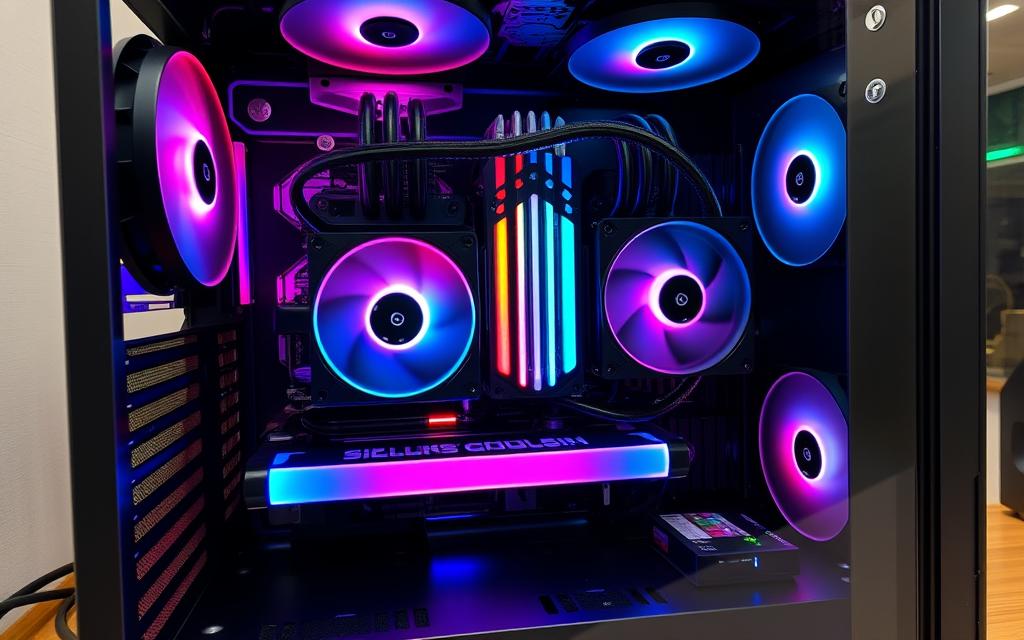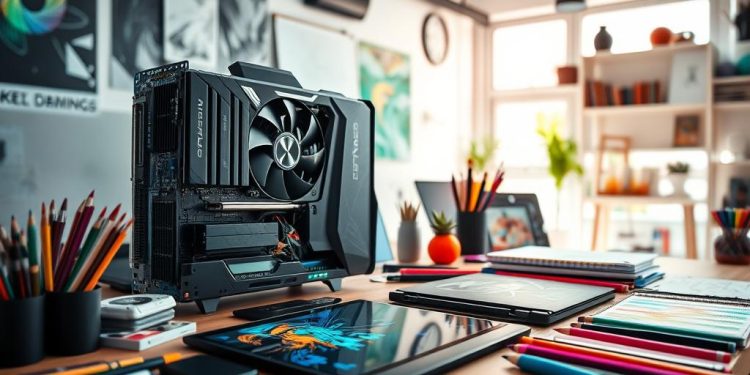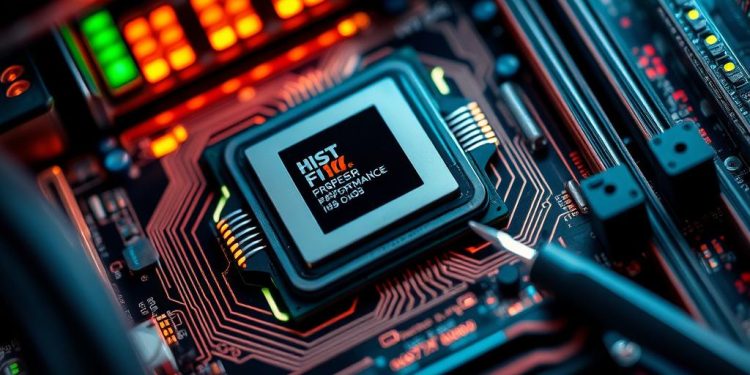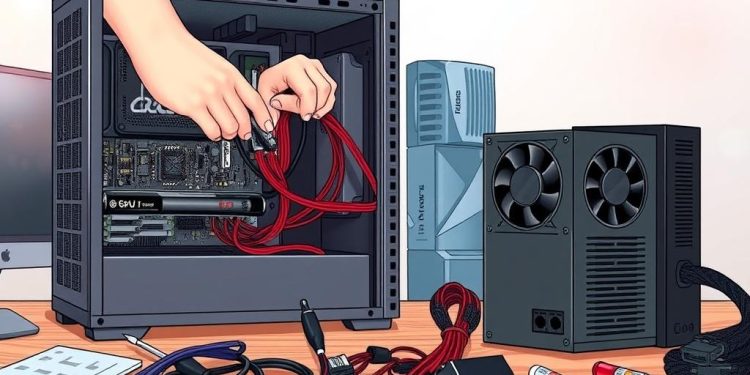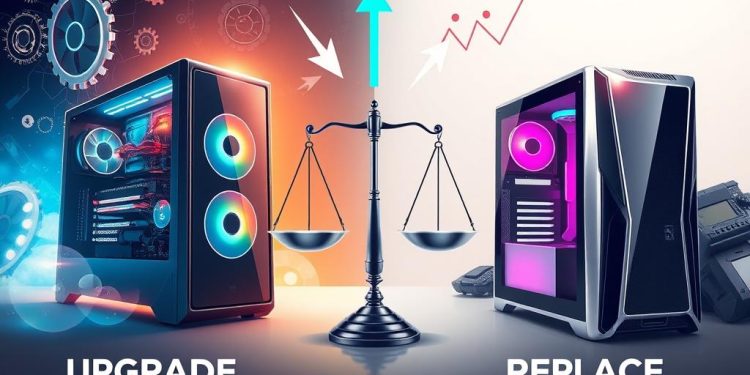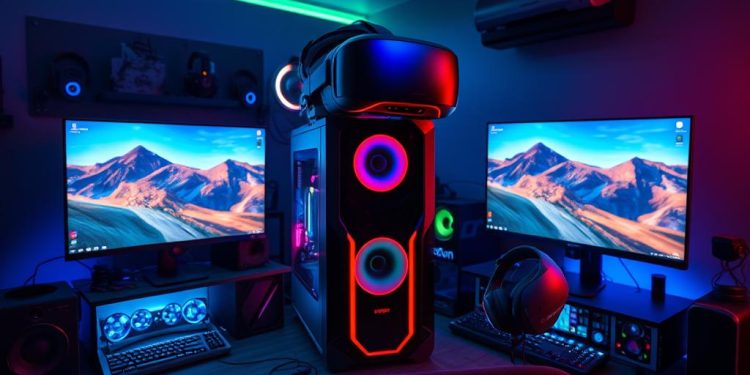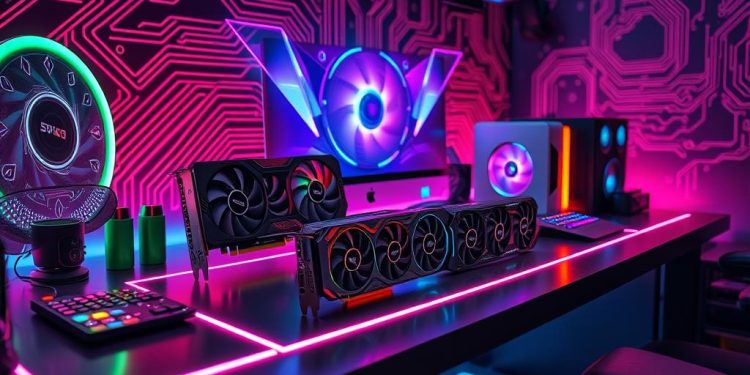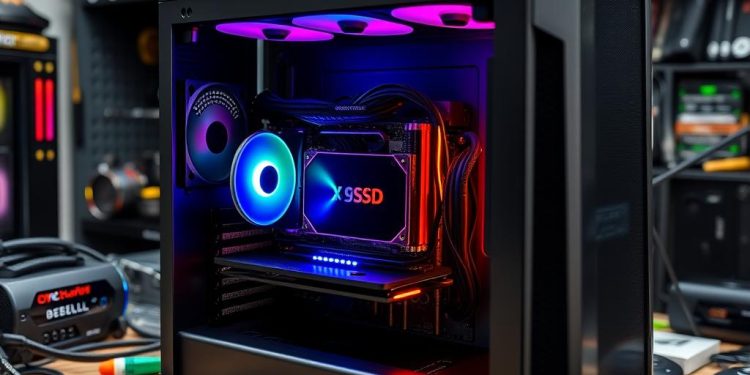Upgrading your PC’s cooling system is essential for achieving efficient thermal management while maintaining a silent operation. Many stock CPU coolers, particularly in affordable pre-built PCs, are inadequate, leading to performance reductions of up to 15-20%. By investing in the best cooling upgrades, you can not only enhance your computer’s performance but also reduce noise levels significantly. For instance, custom liquid cooling systems can lower CPU temperatures by as much as 30-50% compared to standard air coolers, providing an outstanding combination of cooling efficiency and quieter operation.
In this article, we’ll explore various ways to improve your PC cooling, from evaluating your current setup to understanding how different systems like AIO coolers can enhance airflow. With the right adjustments, you can keep your system running cool and quiet, ultimately extending its lifespan and performance.
Understanding PC Cooling Systems
When it comes to your PC, understanding the cooling systems is key to ensuring optimal performance. Thermal management plays a significant role in the functionality and lifespan of your components. Effective cooling not only prevents damage but also boosts performance, especially during intensive tasks.
The Importance of Thermal Management
Proper thermal management is essential for any PC builder or enthusiast. It safeguards against overheating, which can diminish performance and potentially harm hardware. By selecting reliable cooling solutions, you enable your system to run smoothly, reducing the risks associated with high temperatures. Effective cooling mechanisms become critical for powerful machines like gaming PCs and workstations as these setups generate significant heat under heavy workloads.
How Heat Affects PC Performance and Noise
Excess heat directly impacts PC performance. When components overheat, they often throttle, leading to slower operation. Additionally, increased temperatures result in higher fan speeds, which can create unwanted noise. This interplay between heat and noise highlights the need for efficient thermal management. Reducing noise levels while maintaining optimal temperatures can enhance your overall user experience.
| Cooling Type | Effectiveness | Noise Level | Maintenance | Cost Range |
|---|---|---|---|---|
| Air Cooling | Moderate | Higher | Low | $50 – $100 |
| Liquid Cooling (AIO) | High | Lower | Moderate | Approaches air cooling range |
| Custom Liquid Cooling | Very High | Lower | High | Significantly higher initial cost |
Cooling System Upgrades
Upgrading your cooling system can greatly enhance your PC’s performance and longevity. Understanding your current cooling setup is the first step towards making effective improvements. By assessing what you have, you can identify specific areas that may require attention and better cooling solutions.
Evaluating Your Current Cooling Setup
Begin by taking a close look at your existing configuration. Notice if you’re utilizing stock coolers. These often lack the capability to maintain optimal temperatures, especially during intense usage. Factors to evaluate include:
- Noise levels during operation.
- Temperature readings under typical workloads.
- Overall airflow and fan performance.
Taking the time to evaluate your cooling setup is essential. A thorough examination allows you to pinpoint inefficiencies and prepare for upgrades that can significantly improve PC efficiency.
Identifying the Need for Upgrades
Certain signs indicate that your cooling system may need upgrades. For example, if you observe high temperature readings, this could be a cause for concern. Increased noise levels from fans also signal that your setup may be struggling. Other indicators include:
- Frequent thermal throttling during gaming or heavy tasks.
- Dust accumulation hindering airflow through components.
- Older components that may not handle modern heat demands.
Recognizing these warning signs is critical for timely upgrades. Taking action to enhance your cooling system can help improve PC efficiency and extend the lifespan of your hardware.
Upgrading Your CPU Cooler
When considering a CPU cooler upgrade, understanding your options can significantly impact your system’s overall performance. The two primary methods on the market are air cooling and liquid cooling, each with its own unique advantages.
Comparing Air Cooling vs. Liquid Cooling
Air cooling typically provides an economical solution for most users. However, it may produce considerable noise and may not be as effective in lowering temperatures under heavy loads. On the other hand, liquid cooling options tend to deliver superior cooling performance, especially for gamers and users engaged in resource-intensive tasks. Despite their higher cost, they operate quieter and maintain lower temperatures, which is essential for stability during overclocking. Hybrid coolers, which merge the benefits of both air and water cooling technologies, offer a further recommendation for those looking to enhance performance, though they may require more regular maintenance.
Choosing the Right Aftermarket CPU Coolers
Opting for quality aftermarket CPU coolers is critical for maximizing efficiency. When selecting a new cooler, ensure compatibility with your specific processor and motherboard. Brands like Noctua and Corsair provide a range of high-performance coolers suited for various needs. Whether you prefer the affordability of air cooling or the advanced thermal management of liquid cooling, a well-chosen cooler can significantly enhance performance and longevity.
Installation Tips for Enhanced Performance
Proper installation can make a significant difference in performance levels. Ensure you apply high-quality thermal paste correctly for optimal heat transfer. Follow the manufacturer’s guidelines during installation to avoid potential issues. Additionally, consider your case’s airflow by managing cable organization, which can impact cooling efficacy. Keeping the inside of your PC clean and dust-free allows your cooler to perform at its best.
Enhancing Graphics Card Cooling
Improving your graphics card cooling system can have a significant impact on performance and longevity. Upgrading to high-quality cooling solutions not only ensures that your GPU runs efficiently but also minimizes noise levels. The right choice can protect your investment in powerful graphics cards like the Nvidia RTX 5090 and RTX 5070, ensuring they perform at their best during graphic-intensive applications.
Upgrading to Custom GPU Coolers
Your stock GPU cooler may suffice for basic tasks, yet it often fails to provide optimal graphics card cooling during demanding gaming or productivity sessions. Custom GPU coolers from reputable brands such as NZXT and Arctic are designed to run quieter and cooler than their stock counterparts. These coolers can significantly lower temperatures under heavy loads, contributing to enhanced performance and silent cooling solutions. With various designs and materials available, a custom cooler can also add a personal touch to your rig.
Understanding the Benefits of Liquid Cooling for GPUs
When considering advanced cooling options, the liquid cooling benefits for GPUs should not be overlooked. Liquid cooling systems generally provide superior thermal management, leading to reduced noise levels compared to traditional air coolers. While the installation process is more complex, the outcome often justifies the effort. A popular choice is an all-in-one (AIO) unit like the NZXT Kraken G12, which pairs well with a 120mm Asetek unit. For those seeking maximum efficiency, a custom loop featuring a universal GPU water block can be executed, making it a premium yet effective solution for graphics card cooling.
| Cooling Type | Typical Temperature Reductions | Noise Level | Installation Complexity |
|---|---|---|---|
| Stock Air Cooler | 15-20% improvement | Moderate | Easy |
| Custom GPU Cooler | 20-30% improvement | Low | Moderate |
| Liquid Cooling | 20-40% improvement | Very Low | High |
By opting for custom GPU coolers or diving into liquid cooling, you can enhance your GPU’s operation. With improved graphics card cooling, your system will maintain high performance and operate quietly, satisfying both gamers and professionals alike.
Improving System Airflow
Ensuring optimal system airflow is pivotal in maintaining a cool and efficient PC. Several factors contribute to this, including selecting the right case fans, understanding airflow direction, and implementing effective cable management for cooling.
Choosing the Right Case Fans
Investing in high-quality case fans can significantly improve your system airflow. Larger fans, such as 120mm or 140mm, operate quietly while pushing a greater volume of air. Look for fans with high static pressure, allowing them to efficiently handle airflow challenges, especially in densely packed cases. Quality brands like Noctua and be quiet! offer excellent options that strike a balance between performance and noise levels.
The Importance of Airflow Direction and Placement
Airflow direction plays a crucial role in the cooling strategy of your system. Typically, a front-to-back airflow configuration proves to be the most effective. Rear and top fans should exhaust hot air, while front fans introduce cool air. Adjust fan placements based on your setup to ensure that critical components such as the CPU and GPU receive adequate cooling. This attention to airflow direction ensures heat is efficiently managed across the system.
How to Organize Cables for Optimal Airflow
Effective cable management for cooling is essential for maximizing system airflow. Tangled or cluttered cables can obstruct airflow, leading to increased temperatures. Utilize cable ties to group and secure cables neatly along the case edges. This organization not only enhances aesthetics but also promotes better air circulation, allowing for consistent cooling performance within your PC.
| Aspect | Recommendation |
|---|---|
| Fan Size | 120mm or 140mm for better airflow |
| Fan Quality | Choose brands like Noctua and be quiet! |
| Airflow Direction | Front-to-back preferred |
| Cable Management | Use cable ties to minimize obstruction |
Using Quality Thermal Compound
Ensuring optimal thermal performance in your PC requires careful attention to the thermal paste quality you use. Quality thermal compound plays a crucial role in maintaining low temperatures, ultimately enhancing the longevity and efficiency of your components. The thermal paste importance cannot be overstated, as poor-quality or degraded paste can lead to significant temperature increases, where a PC without thermal paste can reach average temperatures of 95°C (200°F).
Why Thermal Paste Quality Matters
High-quality thermal paste significantly reduces thermal resistance, promoting better heat transfer from your CPU or GPU to the cooler. For instance, using a top-tier compound like Arctic Silver 5 can improve temperature management by nearly 20°C compared to systems lacking thermal paste. Ineffective thermal paste leads not only to overheating but also elevates the risk of critical failures, compelling users to regularly replace lower-quality thermal compounds every few months.
Application Techniques for Best Results
To achieve the best thermal compound application, follow these essential steps:
- Clean old thermal paste from both surfaces—the CPU and cooler—using isopropyl alcohol and a lint-free cloth.
- Apply a small, even amount of new thermal compound. The ideal thickness is about 0.02mm, as seen in products like Kooling Monster KOLD-01, which promotes better performance than the market average of 0.5mm.
- Spread the paste evenly, ensuring full coverage without excess that could spill over the edges.
Replacing thermal compound ideally should occur once a year for desktops and every six to eight months for laptops when using high-quality products. Maintaining this schedule will ensure that your system remains cool, reducing the risk of hardware damage due to overheating. Regular maintenance not only protects your investment but also optimizes performance for demanding tasks like gaming and video editing.
Free Ways to Enhance PC Cooling
Optimizing your PC’s cooling can significantly improve its performance and longevity. By implementing simple, free solutions, you can effectively enhance PC cooling for free. Regular cleaning and maintenance are crucial aspects, and monitoring temperatures can help ensure your setup runs smoothly.
Regular Cleaning and Maintenance Tips
Keeping your PC clean is fundamental to maintaining optimal airflow. Dust accumulation can obstruct fans and components, causing temperatures to rise. Here are some effective cleaning and maintenance tips:
- Use compressed air to blow out dust from fans and heatsinks regularly.
- Ensure that the vents are clear and free from debris.
- Organize cables carefully to avoid obstructing airflow, which can improve cooling efficiency by up to 25%.
- Replace thermal paste on components as needed, ideally every 1-2 years, to ensure effective heat transfer.
Monitoring Temperatures for Better Performance
Utilizing software tools and motherboard features for monitoring temperatures is vital for keeping your system running efficiently. Here’s how to effectively manage and monitor temperatures:
- Regularly check CPU and GPU temperatures during demanding tasks, particularly gaming or rendering.
- Install software like HWMonitor or SpeedFan to track system temperatures in real-time.
- Set alerts for high temperature thresholds to prevent overheating, especially if temperatures reach 90°C.
- Make adjustments to cooling setups based on temperature readings to enhance performance further.
| Cleaning Tips | Benefits |
|---|---|
| Use compressed air to clean dust | Improves airflow and cooling efficiency |
| Organize cables | Enhances airflow, reducing overheating risk |
| Regular temperature checks | Prevents performance throttling from overheating |
| Replace thermal paste | Ensures optimal heat transfer |
Conclusion
In conclusion, implementing PC cooling upgrades is crucial for maintaining efficient cooling, ensuring silent operation, and optimizing performance. Understanding the components involved in these systems not only helps you enhance your PC’s operational efficiency but also extends its longevity. By upgrading parts such as CPU coolers, graphics card cooling mechanisms, and airflow management systems, you create an environment that supports optimal PC performance.
As you have learned, effective thermal management is a significant factor in promoting a quieter working atmosphere while allowing your system to perform its best. Whether you’re gaming, working, or creating content, investing in quality cooling solutions will lead to a more reliable and efficient machine. Monitoring temperatures and conducting regular maintenance further reinforce the benefits, establishing a stable balance for your PC.
Ultimately, by taking the steps to upgrade your cooling system, you position yourself for an enhanced computing experience that not only meets your performance demands but ensures that your setup remains a silent, efficient partner in all your activities.

